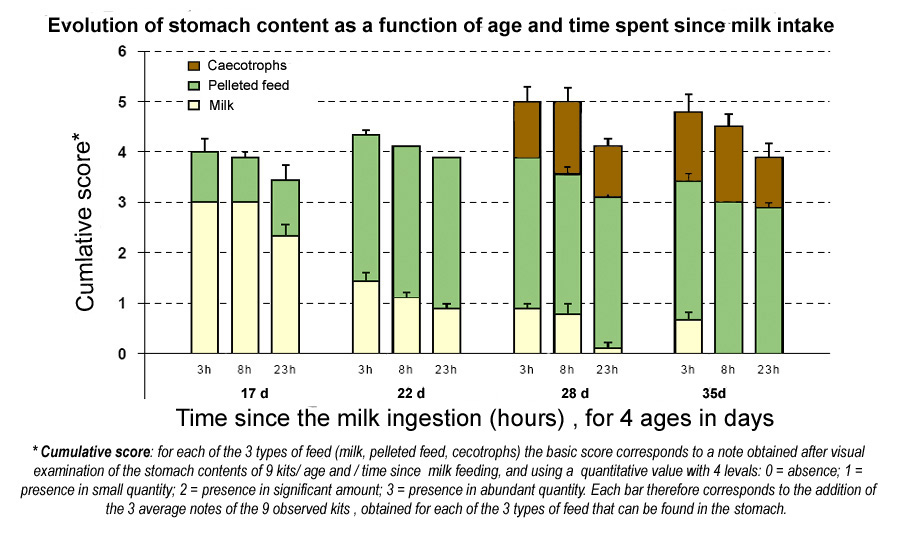
Biology of the rabbit - Chapter 4.4 - Feeding beahviour
Feeding
behaviour and caecotrophy in the young rabbit before weaning
Orengo J. et Gidenne
T., 11èmes
Journées de la recherche cunicole, 29-30 nov. 2005 Paris, pages 45-48
(authors photograpies)
|
Abstract : The aim of this work was to study the intake behaviour of the young before weaning. The study involved 21 litters from primiparous females (NZW x Cal), equalised at 9 kits at birth and again at 14 days. Litters were housed with their mother in specific cages allowing a separate feeding. The milk and solid feed intake, and the stomacal content were measured according to age (17-22-28-35d) and to time delay post-milking (3-8-23h). For the control of the stomach content, a total of 12 litters was sacrified (3 for each age x each time delay after suckling). The young rabbit consumed almost only milk until 17d of age, and 23h hours after milking the stomach still contained high milk quantity (score=2.3 and 0.9 resp. at 17 and 22d). Solid feed was found in low quantity (score=1.0) in the stomach at 17d., but increased sharply from 22d of age. The coagulated milk was mainly located close to the stomach wall in the fundus, whereas the feed was more homogeneously spread (unless soft faeces were found). From 22d, pellet intake reached 7.2 g/d/rab., and then raised to 31 and 48 g/d respectively at 28 and 35d, but it remained highly variable among litters (CV=30% at 35d). From 28 to 35 d, the feed intake increased with post-milking time delay, and 73 to 76% of the solid intake was from 18:00 to 9:00h. Thus, the usual nocturnal intake behaviour of the rabbit was installed as soon as the young ate solid feed. Soft faeces were not found until 28 days of age, and were located in the fundus, they represented 25 to 30% of stomacal content. |

|
Views
of the kits stomach and its contents at the ages of 17 - 22- 28 and 35
days
|
|